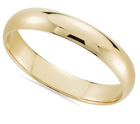 Every country has its own wedding traditions. Some of them are unique and curious, others are trivial. Still, it’s sometimes useful to learn the wedding customs of the overseas countries because they can diversify your own wedding and entertain the guests. There a few German wedding customs that are fun, unusual, and even silly. Let’s find out what they are.
Every country has its own wedding traditions. Some of them are unique and curious, others are trivial. Still, it’s sometimes useful to learn the wedding customs of the overseas countries because they can diversify your own wedding and entertain the guests. There a few German wedding customs that are fun, unusual, and even silly. Let’s find out what they are.
Breaking the porcelain
Weddings in Germany often start long before the wedding. Of course, bachelor and bachelorette parties are big here, but many couples also invite friends over the night before the wedding to break porcelain. Yep, that’s right. They have a party called a “polterabend” and throw cups and plates and even toilets. That's because shards of porcelain are thought to bring luck in Germany.
Marrying twice to the same person
Many Germans get married not just once, but twice. We mean to the same person. That's because a church wedding isn't recognized by the state. So, all couples have to get married first at the civil registry office. Those who want to, then organize a church wedding, which sometimes takes place many months later.
Simple wedding dress
Many brides in Germany don't wear big elaborate dresses with long trains, and those who do opt for a veil, tend to choose ones that go down to their fingertips and not the floor. So, what does the most popular bridal gown look like? Usually, it’s a simple dress of an A-line cut, adorned with some lace and few embellishments.
Who chooses the wedding bouquet
It's usually the groom's job in Germany to pick up his bride's bouquet. But are there any other customs when it comes to wedding bouquets? Here's what a wedding florist has to say. “The groom is supposed to choose the bouquet because that’s supposed to bring luck. Myrtle also brings luck and should always be part of the bouquet”, says Sabine Scheidtweiler.
No bridesmaids and groomsmen
German wedding parties don't usually include bridesmaids and groomsmen. Instead, the bride and groom each choose a witness who is, usually, a sister, a brother, or a best friend. So, what are the witnesses expected to do during the wedding? The witness goes to the civil ceremony, brings tissues, sings the marriage license, and is there for a couple.
White ribbons for the guests
After the wedding ceremony, all the guests receive white ribbons to tie to their cars for the drive to the reception. That way everyone knows who's part of the wedding. Besides the fact that all the cars on their way to the reception also honk their horns as loudly as they can.
Kidnapping of the bride
German brides should watch out once they get to the reception because they might just get kidnapped. That's right! Sometimes, friends of the couple steal the bride quietly and take her to a nearby pub. When the groom notices she's missing, he has to go out looking for her, but once he finds her, he can't just take her back to the party. Oh, no! First, he has to fulfill a task, like paying for the drinks at the pub or singing a song.
When to cut the wedding cake
Sometimes in Germany, the wedding cake isn't cut right after dinner but at the stroke of midnight. Of course, it's the first joint task the bride and groom have to complete as a married couple. And how they do it, can mean something later on down the road. We found out more from a wedding cake maker. “According to German tradition, the couple cut the cake together after they leave the church and go to their reception. The bride takes the knife and the groom puts his hand on hers. Then they cut the cake together. He puts the first piece in her mouth as a sign that he’ll take care of her. These days, many couples cut the cake in the afternoon or at midnight”, says Sabine Jackmich.
No diamonds in a wedding ring
If you're single and checking out that good-looking guy or girl, be sure to look for the right hand. Literally. Married people here tend to wear their wedding rings on their right hands. Usually, the rings are fairly simple and don't involve huge diamonds. A typical German wedding ring is classic in design, made from white, yellow, or rose gold, or from platinum. The surface can be smooth or adorned with one or several stones.
If you're planning on tying the knot sometime soon, you now have some German traditions you might want to incorporate in your own wedding.
(c)

